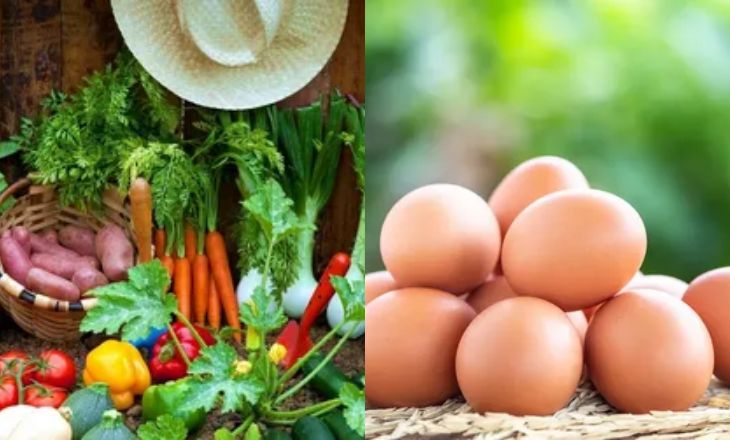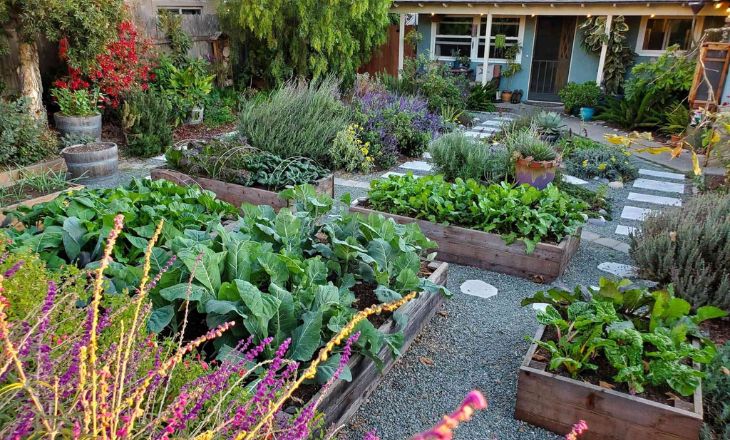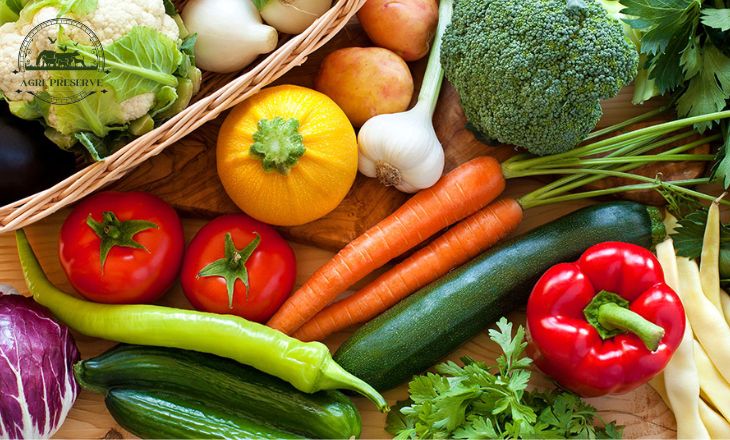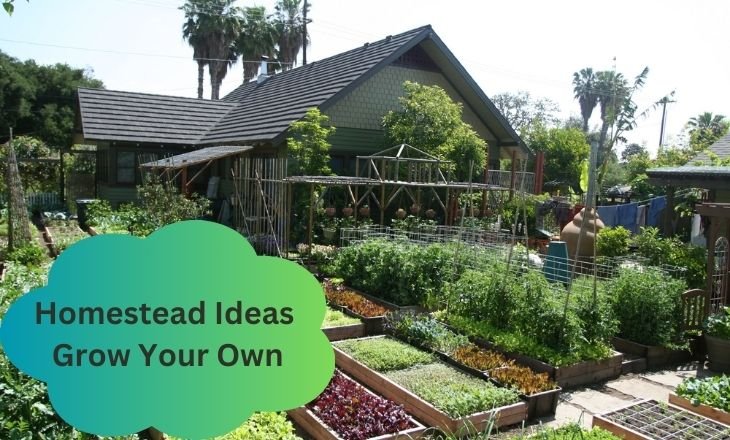Try Homestead Ideas to be more self-sufficient. Grow your own food by planting fruits and vegetables or raising chickens for eggs. Homesteading helps you connect with nature and live sustainably. Start with a small garden or raise livestock to produce your own food and live an eco-friendly life.
Whether you’re experienced or just starting out, get ready to be inspired by the endless possibilities of growing your own food.
Homestead Ideas
Homesteading is a mindset that offers self-sufficiency and sustainability. One idea is to create a vertical garden on your homestead to grow more food in less space.
Another idea is to use permaculture principles to design a system that benefits the land and its inhabitants. This approach improves soil health and biodiversity while reducing maintenance needs, allowing you to enjoy the results without constant upkeep.
What Is Homesteading
Homesteading is a lifestyle where people focus on being self-sufficient, sustainable, and connected to the land. It involves activities like gardening, raising animals, preserving food, and doing DIY projects.
Homesteaders aim to rely less on buying things from stores and instead make their own food, energy, and resources.
Homesteading makes people feel proud, empowered, and independent. They care about living in harmony with nature by using methods like permaculture and organic farming to reduce their impact on the environment. To embrace the homesteading lifestyle, you need to be dedicated, work hard, and be willing to learn new skills.
It offers a more sustainable way of living and a stronger connection to nature. The joy of picking your own vegetables or gathering fresh eggs from your chickens is incomparable in today’s fast-paced world.

What Every Homestead Needs?
Essential elements are necessary for every homestead, regardless of its size. By having these in place, you can experience the advantages of cultivating your own array of fresh vegetables and herbs.
We Need Space
For a thriving vegetable and herb garden, locate a sunny area to kickstart your planting. Utilize raised beds, pots, or repurposed milk crates in your outdoor space. Herbs flourish on a bright kitchen windowsill. Opt for vertical gardening to maximize your available area.
Proud Source Water
Good water is important for gardening because it affects plant health. Instead of tap water, try collecting rainwater or using water from activities like laundry or dishwashing. These methods are eco-friendly and provide nutrients for plants.
To enhance gardening, use a filter to ensure clean and safe water, helping plants grow better and look greener.
A Composting System
A good composting system is important for gardening. It helps plants grow, reduces waste, and improves soil health. By mixing brown and green materials correctly, you can make nutrient-rich compost fast. Good ventilation helps microorganisms break down organic matter well.Layering materials also helps keep moisture levels right for decomposition.
With a well-kept composting system, you can turn kitchen scraps and yard waste into useful compost for your garden.
Extra Storage Space
Gardening requires extra storage for harvested food. A root cellar or pantry in the garden can help keep fruits and vegetables fresh for longer. Use shelves or racks in your shed or greenhouse for organized storage. Air-tight containers and vacuum sealers can extend the shelf life of perishable items.
These storage solutions save money and reduce food waste, helping you enjoy homegrown produce year-round.

Backyard Homestead Ideas
You can grow fruits, vegetables, raise livestock, and keep bees in your backyard. It’s a rewarding way to live, whether you’re experienced or new to gardening. These ideas will inspire you to grow your own food, use renewable resources, and live closer to nature.
Backyard Chicken
Raising backyard chickens is rewarding. They give fresh eggs, control pests, and can be good friends. Chickens are easy to care for and can live in various climates. By feeding them scraps and using their manure for gardening, you can reduce food waste.
Watching chickens interact and showing their personalities is fun. Each chicken has unique traits, making your backyard lively. Raising chicks into hens is a fulfilling journey that connects you with nature and self-sustainability.

Backyard Fruit Trees
Picture yourself in your backyard on a cool morning, smelling the sweet scent of ripe fruit. The sun shines on your fruit trees, making the colorful fruit easy to reach. From juicy peaches to flavorful cherries, picking fruit from your own trees is special.
Having fruit trees in your backyard gives you fresh fruit and lets you connect with nature.
Backyard Building Projects
Building projects in your backyard lets you be creative and personalize your outdoor space. You can make a fire pit for cozy nights or a shed for tools. With the right tools and materials, you can show off your skills and style. These projects make your outdoor area more beautiful and useful.
Picture yourself having morning coffee in a pergola you built, or having barbecues under a gazebo with fairy lights. These projects not only look nice but also make it easier to enjoy nature and have guests over.
Small Homestead Ideas
You can do fun projects at home like raising bees or making soap. It doesn’t matter if you live in the city or the countryside, you can turn your space into a thriving homestead. You can learn how to grow food, use renewable energy, and help biodiversity while living closer to the land.
Grow Herbs
Creating a small herb garden may seem old-fashioned, but it offers many options. Imagine stepping outside each morning to see green plants and enjoy pleasant scents.
Growing your own herb garden is more than just plants; it’s about connecting with nature, living sustainably, and having fresh flavors at your fingertips.
Even a small piece of land or a window sill can become a vibrant garden. Herbs like basil and thyme each have their own appeal and can enhance the taste of your food.
Start A Beekeeping
Starting a beekeeping operation on your small homestead can be rewarding. Bees are important for pollinating plants and making honey. By having beehives on your property, you can help bees and your ecosystem.
Learn how to take care of bees properly by taking a beekeeping course or working with a mentor. Having a good hive setup, equipment, water, and plants will help your bees stay healthy. Be patient and dedicated as you learn to work with your bees.
Managing your hives and harvesting honey will take effort.With commitment and passion, starting a small beekeeping operation can be fulfilling.
Small Aquaponics System
A small aquaponics system at home combines fish farming and plant growing. It helps plants grow by using fish waste, creating a self-sustaining environment. The system recirculates water between the fish tank and plant beds, saving water.
Growing your own food at home reduces reliance on store-bought produce and supports sustainable living. A small aquaponics system is simple and impactful, allowing individuals to grow fresh produce at home.
Self-Sufficient Homestead Ideas
Designing your space to work with nature helps create a sustainable ecosystem that efficiently produces food, energy, and resources. Off-grid systems collect, filter, and store water for drinking and irrigation. Using alternative building materials lowers costs and reduces environmental impact.
Prioritizing sustainability and self-reliance in homesteading helps create a thriving ecosystem that meets your needs while minimizing harm to the environment. Embracing innovative technologies and practices, along with traditional wisdom, helps build a resilient and truly self-sufficient homestead that lives in harmony with nature.
How To Start Composting In A Tumbler
To start composting in a tumbler, gather green and brown materials like fruit scraps, vegetable peels, leaves, and shredded paper. Layer these materials in the tumbler for a good balance of nitrogen and carbon. Turn the tumbler regularly to help the compost break down faster. Keep the moisture level right – it should feel damp.
Adding soil or finished compost can help break down materials faster. Check the temperature in the tumbler, it should be between 110-160 degrees Fahrenheit. Adjust the airflow if it gets too hot or cold by turning the tumbler more or adding more materials.
Over time, you’ll have nutrient-rich compost for your garden and reduce waste effectively.
Composting For Beginners
Composting cuts waste and creates rich soil for gardens. Start by collecting fruit scraps, coffee grounds, and yard waste. Combine green (nitrogen-rich) and brown (carbon-rich) materials, such as shredded newspaper or cardboard, to balance the compost pile.
If it breaks down slowly, mix it often to allow air in. Each batch of compost is unique, so experiment with different ratios and techniques to find what suits you best. Have fun composting!
Conclusion
Homestead Ideas can make you feel independent and connected to the land. You can grow food, raise animals, or live off the grid to live a homesteading life. Trying these ideas can help the environment and make you feel better. With effort and a desire to learn, anyone can create a successful homestead that benefits them and the earth.
Start embracing homesteading and create your sustainable paradise today!

Frequently Asked Question
Where Is The Best Place To Start A Homestead?
The best place to start a homestead depends on your individual preferences and needs, but generally areas with fertile soil, access to water, and a moderate climate are ideal.
Who Benefited Most From The Homestead Act?
The Homestead Act primarily benefited white settlers looking to acquire land in the United States.

